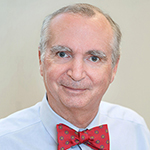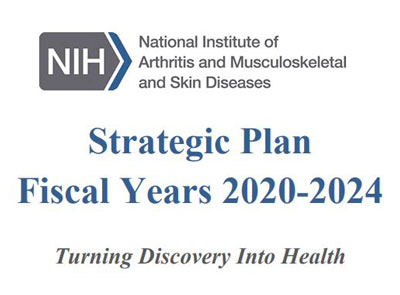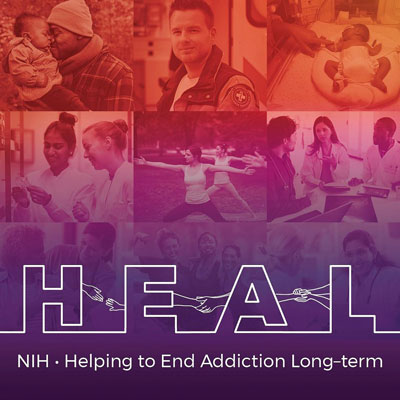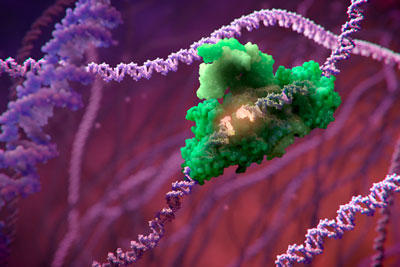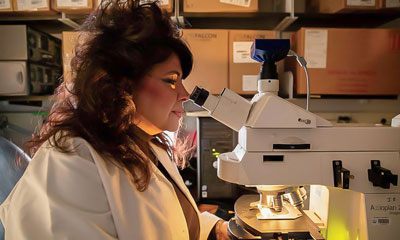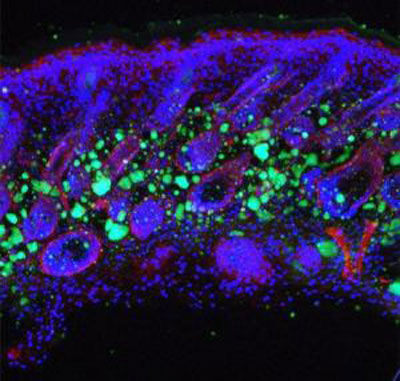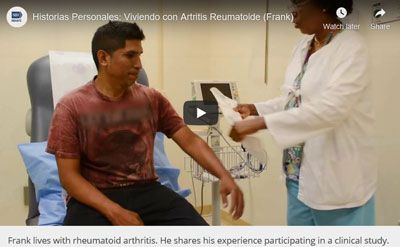NEWS
Acting Director’s Letter on the NIH HEAL Initiative Awards: The Back Pain Consortium (BACPAC) Research Program Component
I’d like to take this opportunity to focus on what the National Institutes of Health (NIH) and the NIAMS are doing to help curb the opioid crisis that has impacted so many families across the nation. Many parts of the NIH have come together to enable the biomedical research community to uncover new solutions to this national problem. At the NIAMS, we are contributing by working to find ways to reduce opioid misuse through research to improve treatments for musculoskeletal pain, particularly lower back pain. We hope this effort will ease the ongoing crisis while opening doors to create better, more sustainable treatments for pain.
Image: Robert H. Carter, M.D., NIAMS Acting Director
NIAMS Unveils Strategic Plan for 2020‒2024
The fields that the NIAMS supports have seen major advances in recent years and are poised for additional rapid progress. The Institute’s new Strategic Plan conveys the tremendous potential of the current research trajectory and the Institute’s aspirational vision for how work over the next five years may lead to meaningful improvements in human health.
NIH Funds $945 Million in Research To Tackle the National Opioid Crisis Through NIH HEAL Initiative
The NIH has awarded $945 million in total fiscal year 2019 funding through the Helping to End Addiction Long-term SM or NIH HEAL InitiativeSM. The Initiative is leveraging expertise from the NIAMS and other NIH Institutes and Centers to improve treatments for chronic pain, curb the rates of opioid use disorder and overdose, and achieve long-term recovery from opioid addiction.
2019 NIH Director’s High-Risk, High-Reward Research Program Announced
The NIH has awarded 93 grants through its High-Risk, High-Reward Research Program that will fund highly innovative biomedical or behavioral research proposed by extraordinarily creative scientists. The NIAMS is administering an NIH Director’s Pioneer Award for Jennifer H. Elisseeff, Ph.D., Johns Hopkins University, for her project “Biomaterials-Directed Regenerative Immunotherapies.”
NIH Awards $89 Million for Additional Projects To Advance Genome Editing
The NIH has made 24 additional grants aimed at developing new technologies and novel research approaches in the Somatic Cell Genome Editing Program. The NIAMS is one of several NIH Institutes and Centers managing these awards. The human genome contains thousands of genes, each of which contains information that cells use to make proteins. In genetic diseases, a problem with a gene can cause a cell to not make a protein, or it may make a protein incorrectly. Genome editing aims to change the DNA sequence so that cells can make the right proteins again.
Photo credit: XVIVO
NIH Loan Repayment Programs Updated With Increased Award Amounts and Expanded Health Disparities Program: Application Deadline Is November 15
The NIH Loan Repayment Programs—currently accepting applications until November 15—help new researchers and clinicians with the cost of medical training. The awards encourage good research by repaying some of a researcher's qualified educational debt in return for a commitment to engage in NIH mission-relevant research. Recently, the NIH increased award amounts from $35,000 annually to up to $50,000.
NIH MedlinePlus Magazine: Close to Home, NIH Researcher and Alopecia Patient Seeks a Cure
Angela Christiano, Ph.D., a NIAMS-funded scientist, is not a typical researcher. Dr. Christiano has the disease she studies—a hair loss disease called alopecia areata. NIH MedlinePlus Magazine has related coverage, including:
Photo credit: Columbia University Magazine
RESOURCES
Spotlight on Scientific Imagery: Skin and Fat Cells
This is a microscopic image of the skin, showing skin cells stained blue and fat cells stained green. The fat cell layer forms the final barrier against bacteria entering deep into the body. NIAMS-supported research in mice and humans has shown how the number of fat cells in the skin decreases with age, which makes the skin more susceptible to infection.
Photo credit: Richard Gallo, M.D., Ph.D., UC San Diego Health, and Ling-juan Zhang, Ph.D., Xiamen University, Xiamen, China
New NIAMS Video: Frank’s Story
A new video has posted in the NIAMS collection of personal stories about participating in clinical research. In this video, Frank shares his story in his native language, Spanish, about living with rheumatoid arthritis and his experience participating in clinical research at the NIH. The video is available with captions in English.
NCCIH Clinical Digest: Mind and Body Approaches for Chronic Pain
This issue of the NCCIH Clinical Digest from the National Center for Complementary and Integrative Health (NCCIH) summarizes current scientific research about mind and body approaches for chronic pain, including fibromyalgia, headache, low-back pain, neck pain, osteoarthritis and rheumatoid arthritis.
FDA Develops “Biosimilar Basics,” Web Resources for Patients
The U.S. Food and Drug Administration (FDA) has developed new educational materials for patients about biosimilar medications. Biosimilars are FDA-approved biologic medications that are compared to currently available biologics. Biologic medications are developed through advance science and are generally made from natural sources.
EVENTS
September NIAMS Advisory Council Meeting Available on Videocast
A video recording of the September 10 NIAMS Advisory Council Meeting is available. The next NIAMS Advisory Council Meeting will be held February 4, 2020.

National Institute on Aging (NIA) Geroscience Summit: Targeting Chronic Diseases Through Geroscience
November 4‒5, 2019
Natcher Conference Center, Building 45, NIH Campus, Bethesda, Maryland
The event will be videocast.
FDA Public Meeting of the Immunology Devices Panel of the Medical Devices Advisory Committee
November 13‒14, 2019
Doubletree by Hilton, Grand Ballroom, 620 Perry Parkway, Gaithersburg, Maryland
For information: Contact Aden Asefa, FDA Center for Devices and Radiological Health, 301-796-0400 or FDA.MetalImplants@fda.hhs.gov.
NIH Director's Wednesday Afternoon Lecture Series
The NIH Director’s Wednesday Afternoon Lecture Series resumed in September. Renowned scientists from around the globe present research weekly on a variety of topics. The lectures are continuing medical education certified, open to the public and available live via webcast.
NIH Science Lectures and Events Available via Internet
The NIH hosts a number of science seminars and events that are available online through real-time streaming video (videocast). The NIH calendar notes these videocast events with a video icon ![]() .
.

